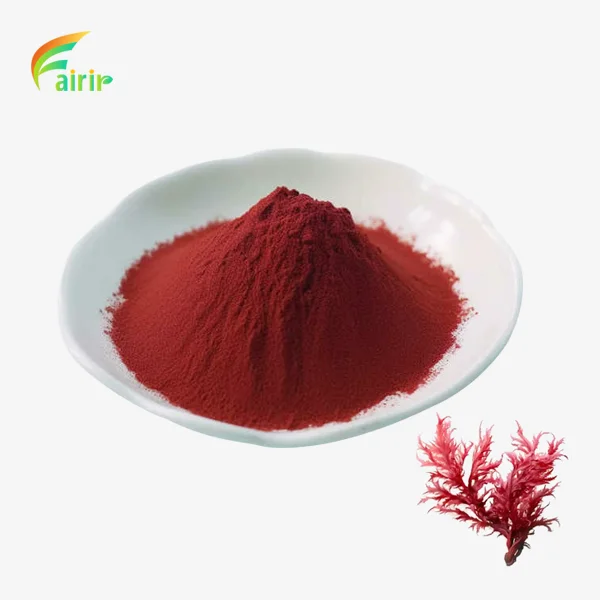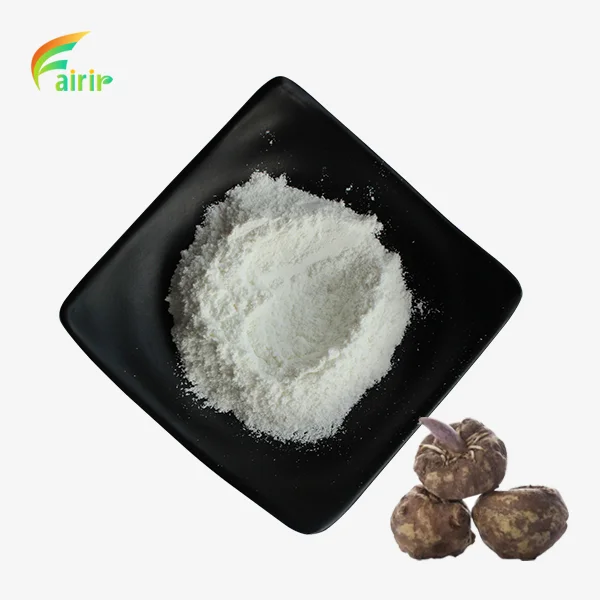How is Squalane oil derived from plant sources?
Squalane oil, a highly prized ingredient in the cosmetics and skincare industry, has gained significant attention for its remarkable moisturizing and anti-aging properties. Derived from plant sources, this versatile oil offers a sustainable and eco-friendly alternative to its shark-derived counterpart. The process of obtaining squalane oil from plants involves a series of sophisticated extraction and purification techniques, ensuring the final product is of the highest quality and purity. In this blog post, we will delve into the intricate journey of squalane oil, from its origins in various plant sources to its transformation into the refined, stable oil that has become a staple in many beauty products. Understanding this process not only highlights the innovation behind plant-based squalane but also underscores its importance in the growing clean beauty movement.

Major Plant Precursors: From Olive Oil, Sugarcane, and Amaranth to Squalene
Olive Oil: The Traditional Source
Olive oil has long been recognized as a primary source of plant-derived squalane. The process begins with the extraction of squalene, a precursor to squalane, from the unsaponifiable fraction of olive oil. This fraction, which makes up about 0.6-1.2% of olive oil, is rich in squalene. The extraction typically involves a multi-step process including saponification, followed by solvent extraction or molecular distillation. Once isolated, this raw squalene undergoes further processing to convert it into stable squalane oil. The resulting product is highly valued for its similarity to human sebum, making it an excellent emollient in skincare formulations.

Sugarcane: A Sustainable Alternative
In recent years, sugarcane has emerged as a promising and sustainable source of squalane oil. The process involves fermenting sugarcane to produce a bio-derived squalene precursor. This method is particularly attractive due to its lower environmental impact compared to olive oil extraction. The fermentation process can be finely controlled to yield a consistent quality of squalene, which is then converted to squalane. This approach not only provides a reliable source of squalane but also aligns with the growing demand for sustainable beauty ingredients. The resulting squalane oil from sugarcane is chemically identical to that derived from olives, offering the same beneficial properties for skin care applications.
Amaranth: An Emerging Source
Amaranth seed oil is gaining attention as another viable source of plant-based squalane. This ancient grain contains a significant amount of squalene, making it an attractive option for squalane production. The extraction process from amaranth involves cold-pressing the seeds to obtain the oil, followed by a series of purification steps to isolate the squalene. This method is particularly appealing due to its minimal processing requirements and the potential for high yield. The squalane oil derived from amaranth shares the same beneficial properties as other plant-based sources, including excellent moisturizing capabilities and compatibility with various skin types. As research continues, amaranth may become an increasingly important source in the production of sustainable squalane oil.
Extraction and Purification: Recovering Squalene from Unsaponifiable Fractions and By-Products
Saponification and Fractionation
The journey from plant material to pure squalane oil begins with the critical step of saponification and fractionation. This process involves treating the raw plant oil with an alkaline solution, typically sodium hydroxide, to break down the triglycerides into glycerol and fatty acids. The resulting mixture is then fractionated to separate the saponifiable and unsaponifiable components. Squalene, being part of the unsaponifiable fraction, is concentrated in this step. Advanced fractionation techniques, such as molecular distillation or supercritical fluid extraction, are employed to further purify and concentrate the squalene. These methods ensure that the extracted squalene is of high purity, free from contaminants that could affect the quality of the final squalane oil product.
Solvent Extraction Techniques
Solvent extraction plays a crucial role in isolating squalene from plant sources, particularly when dealing with low-concentration raw materials. This process typically involves using organic solvents such as hexane or ethanol to selectively extract squalene from the plant material or its by-products. The choice of solvent and extraction conditions is carefully optimized to maximize squalene yield while minimizing the co-extraction of unwanted compounds. After extraction, the solvent is removed through evaporation or distillation, leaving behind a concentrated squalene extract. This extract then undergoes further purification steps to remove any residual solvent and other impurities, ensuring the safety and quality of the squalane oil. Advanced techniques like supercritical CO2 extraction are also being explored as environmentally friendly alternatives to traditional solvent extraction methods.
Chromatographic Purification
The final stage in refining squalene to produce high-quality squalane oil often involves chromatographic purification techniques. This step is crucial for removing any remaining impurities and ensuring the highest possible purity of the squalene before its conversion to squalane. Column chromatography, high-performance liquid chromatography (HPLC), or flash chromatography are commonly employed methods. These techniques separate compounds based on their affinity to the stationary phase, allowing for the isolation of pure squalene. The purified squalene is then ready for the hydrogenation process to convert it into stable squalane oil. The use of chromatographic methods not only enhances the purity of the final product but also allows for quality control and standardization across different batches, ensuring consistent high quality in the squalane oil produced.
Hydrogenation and Biotechnological Conversion: Turning Plant-Sourced Squalene into Stable Squalane Oil
Chemical Hydrogenation Process
The transformation of squalene into squalane oil primarily occurs through a chemical hydrogenation process. This critical step involves adding hydrogen to the squalene molecule under controlled conditions, typically using a metal catalyst such as nickel or platinum. The hydrogenation saturates the double bonds in squalene, converting it into the more stable squalane. This process is carried out under high pressure and temperature, carefully monitored to ensure complete conversion without degrading the molecule. The resulting squalane oil is significantly more stable than its precursor, resistant to oxidation, and possesses a longer shelf life. This stability makes squalane oil ideal for use in various cosmetic formulations, as it maintains its beneficial properties over time without becoming rancid or losing efficacy.
Enzymatic Conversion Methods
In recent years, enzymatic conversion has emerged as a promising alternative to chemical hydrogenation for producing squalane oil. This biotechnological approach utilizes specific enzymes, typically hydrogenases, to catalyze the conversion of squalene to squalane. The enzymatic method offers several advantages, including milder reaction conditions and potentially higher selectivity. This process can be carried out at lower temperatures and pressures compared to chemical hydrogenation, making it more energy-efficient and environmentally friendly. Additionally, enzymatic conversion often results in a purer product with fewer by-products, reducing the need for extensive purification steps. As research in this area progresses, enzymatic methods may become increasingly prevalent in the production of high-quality squalane oil, offering a more sustainable and efficient pathway from plant-sourced squalene.
Quality Control and Standardization
The final stage in producing plant-derived squalane oil involves rigorous quality control and standardization procedures. These steps are crucial to ensure that the squalane oil meets the high standards required for cosmetic and pharmaceutical applications. Quality control measures typically include gas chromatography-mass spectrometry (GC-MS) analysis to verify the purity and composition of the squalane oil. This technique can detect any residual squalene or other impurities that may have remained after the conversion process. Additionally, physical and chemical properties such as viscosity, refractive index, and oxidative stability are carefully monitored. Standardization ensures that each batch of squalane oil meets specified criteria for purity, stability, and efficacy. This consistency is essential for manufacturers using squalane oil in their formulations, as it guarantees the reliability and performance of their final products.
Conclusion
The derivation of squalane oil from plant sources represents a significant advancement in sustainable cosmetic ingredients. From the selection of plant precursors like olive oil, sugarcane, and amaranth to the sophisticated extraction, purification, and conversion processes, each step contributes to the production of high-quality, stable squalane oil. This plant-derived alternative not only matches the beneficial properties of its shark-derived counterpart but also aligns with ethical and environmental considerations. As technology and research continue to evolve, we can expect further improvements in efficiency and sustainability in squalane oil production, solidifying its position as a key ingredient in the clean beauty movement.
At Shaanxi Fairir Biotech Co., Ltd. we are committed to providing high-quality plant extracts, including squalane oil, to meet the evolving needs of the pharmaceutical, nutraceutical, cosmetic, and food industries. Our state-of-the-art 10,000 square meter GMP-certified manufacturing plant is equipped with advanced extraction and purification equipment, ensuring the highest standards of quality and efficiency. We pride ourselves on our professional services, competitive prices, and dedication to customer satisfaction. For more information or inquiries about our squalane oil and other plant extracts, please contact us at sales@fairirbiotech.com.
FAQ
Q: What are the main plant sources for squalane oil?
A: The main plant sources for squalane oil include olive oil, sugarcane, and amaranth seeds.
Q: How does plant-derived squalane oil differ from shark-derived squalane?
A: Plant-derived squalane is chemically identical to shark-derived squalane but is more sustainable and ethical.
Q: What is the process of converting squalene to squalane?
A: Squalene is converted to squalane through hydrogenation, either by chemical processes or enzymatic methods.
Q: Why is squalane oil popular in skincare products?
A: Squalane oil is popular due to its excellent moisturizing properties, stability, and similarity to human sebum.
Q: How is the quality of squalane oil ensured?
A: Quality is ensured through rigorous testing methods like GC-MS analysis and standardization procedures.
References
1. Huang, Z. R., Lin, Y. K., & Fang, J. Y. (2009). Biological and pharmacological activities of squalene and related compounds: potential uses in cosmetic dermatology. Molecules, 14(1), 540-554.
2. Popa, O., Băbeanu, N. E., Popa, I., Niță, S., & Dinu-Pârvu, C. E. (2015). Methods for obtaining and determination of squalene from natural sources. BioMed research international, 2015.
3. Wolosik, K., Knas, M., Zalewska, A., Niczyporuk, M., & Przystupa, A. W. (2013). The importance and perspective of plant-based squalene in cosmetology. Journal of cosmetic science, 64(1), 59-66.
4. Kim, S. K., & Karadeniz, F. (2012). Biological importance and applications of squalene and squalane. Advances in food and nutrition research, 65, 223-233.
5. Spanova, M., & Daum, G. (2011). Squalene–biochemistry, molecular biology, process biotechnology, and applications. European Journal of Lipid Science and Technology, 113(11), 1299-1320.
6. Lozano-Grande, M. A., Gorinstein, S., Espitia-Rangel, E., Dávila-Ortiz, G., & Martínez-Ayala, A. L. (2018). Plant sources, extraction methods, and uses of squalene. International journal of agronomy, 2018.











_1751965378790.webp)